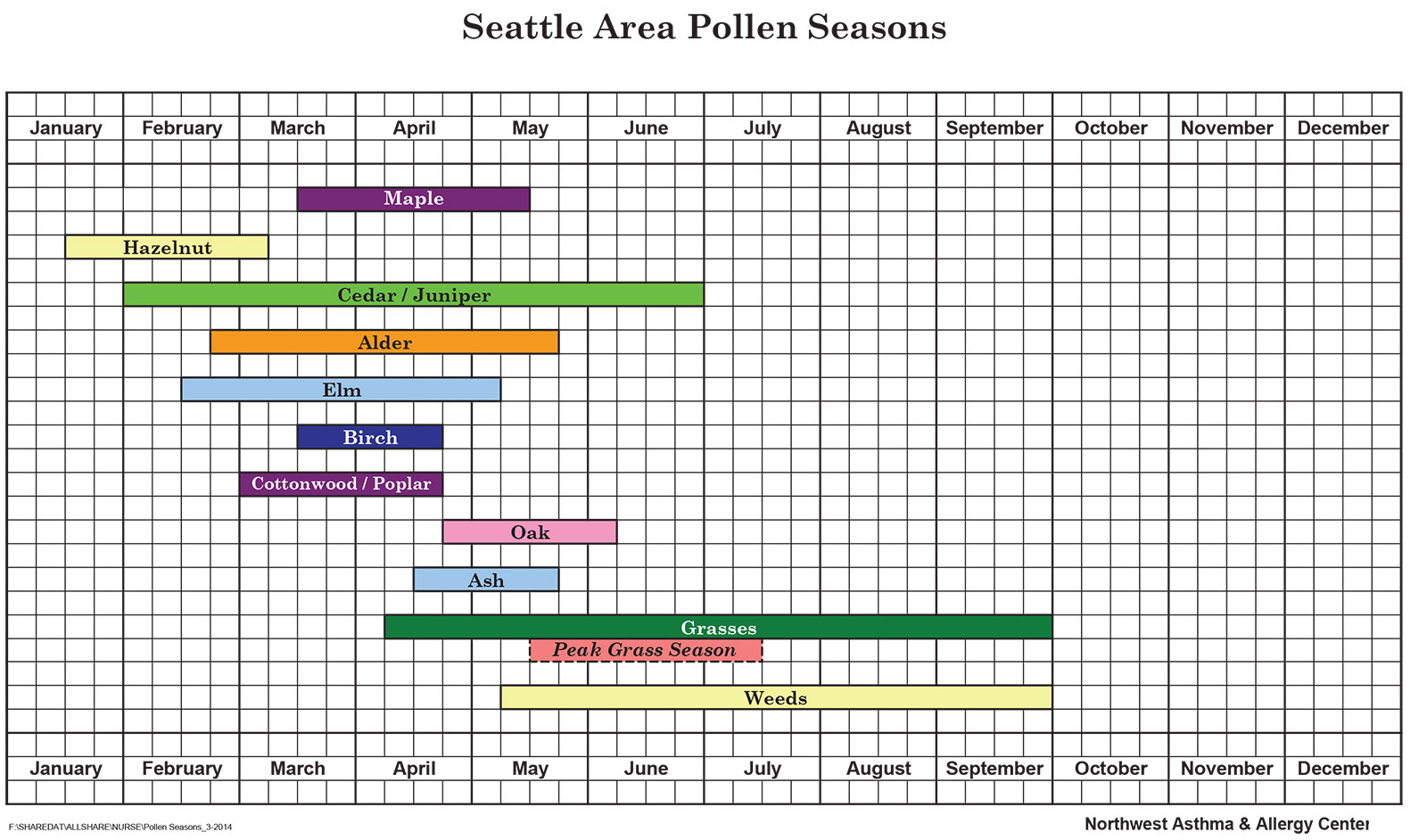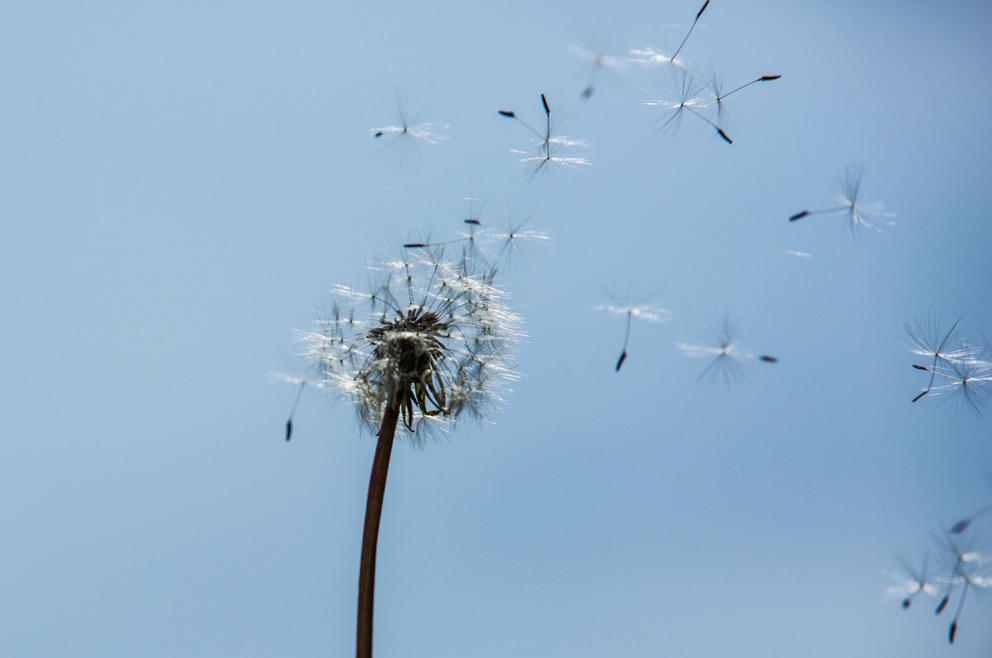Here in Seattle, the Northwest Allergy and Asthma Center (NAAC) takes measurements of pollen, with devices that capture airborne particles on a sticky tape. The sources of pollen are separated into three distinct plant categories: trees, grass and weeds.
NAAC’s pollen count has two of these devices, including one that runs 24 hours a day and provides information for readings on the National Allergy Bureau’s website. According to current measurements, grass and weed pollen is listed as absent for now, while tree pollen gets a “very high” rating. A March 19 measurement by NAAC’s devices, which are located in Northgate, showed tree pollen particles at 699 particles per square meter. That’s enough pollen to hit most susceptible people with allergy symptoms, although particularly sensitive people can start feeling the effects as soon as pollination begins.

NAAC laboratory manager Jolanta Olech, checks the pollen-counting devices herself. She says that while we are in the general season for tree pollen, some trees pollinate earlier than others — experiencing allergies right now might indicate a sensitivity to tree pollen, but the times in which different trees pollinate also overlaps. Although Olech can tell the difference between different tree pollens, their overlapping pollination periods makes it difficult to pinpoint which exact tree species is the source of a single person’s allergy. Right now, a few kinds are pollinating, including birch and alder. In the next month, oak and ash are expected to begin pollination.
“All these trees have their own life and schedule for when they start to pollinate,” Olech says. And right now, she says we’re just seeing the beginning of pollen season.
Trees are the first to expel pollen, with their typical season lasting throughout the spring. Grass pollen season tends to start in April or May, going until July. Weed season, the latest, starts sometime in July and can last until September.
Lahari Rampur, a clinical assistant professor of allergy and immunology at the University of Washington School of Medicine, says that she’s noticed particularly high pollen counts these past few days as pollination season for trees begins. She’s not surprised that symptoms for allergy sufferers are beginning to kick in now.
“Generally, there are worse allergy symptoms with higher pollen counts,” she says. Even if you’re not in an area with many trees, Rampur says you might still experience the effects as pollen “can travel several miles, depending on wind speed.”
Olech noted that she’d started counting pollen at the end of January, but when February’s unexpected snow fell, it stopped. By March 1, the snow had cleared and pollen began to build up again — and now that we’re experiencing a rare extended patch of sun, pollination has resumed in full force. Rain and wet weather, like the odd snow, typically suppresses pollen’s presence in the atmosphere.
While sufferers can’t fully escape the pollen, Rampur says that you can work to decrease the intensity of allergy symptoms by keeping house windows shut. Showering and changing clothes regularly are other methods to make sure you’re not tracking too much pollen into the house (a particular problem for people with pets). Rampur says that pollen particles are big enough to be filtered out by most air purifiers, since the particles are bigger than dust and animal dander. But air filters and purifiers aren't necessarily a foolproof fix for allergy season.
Rampur also says that it’s important to take allergy medication regularly to mitigate symptoms.
“It’s daily maintenance medications,” she says. “Not just when you see symptoms.”
In the meantime, identifying when allergy symptoms appear each year might help sufferers get an idea of what they’re allergic to — and when to expect symptoms next year. NAAC updates their Twitter feed regularly with measurements of pollen counts.
“If I have an allergy or my child has an allergy and I wonder what it is, I can look at the pollen count,” Olech says. If you’re wondering when you might expect your allergies linked to trees, weeds or grass, she says the count can get you informed and ready for that.
So at the very least, following pollen counts can help those suffering from allergies figure out when to take the above precautions — or when to hunker down at home and wait for the worst wave to pass.
* This post has been updated to include clarifications from Rampur.




